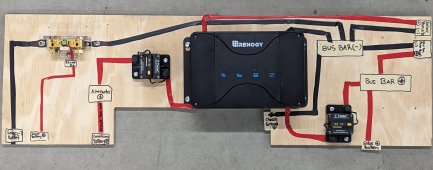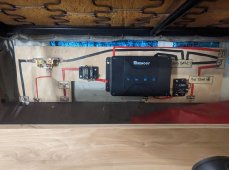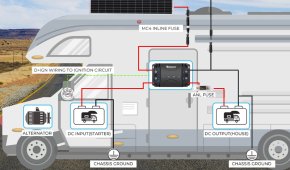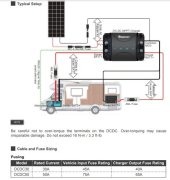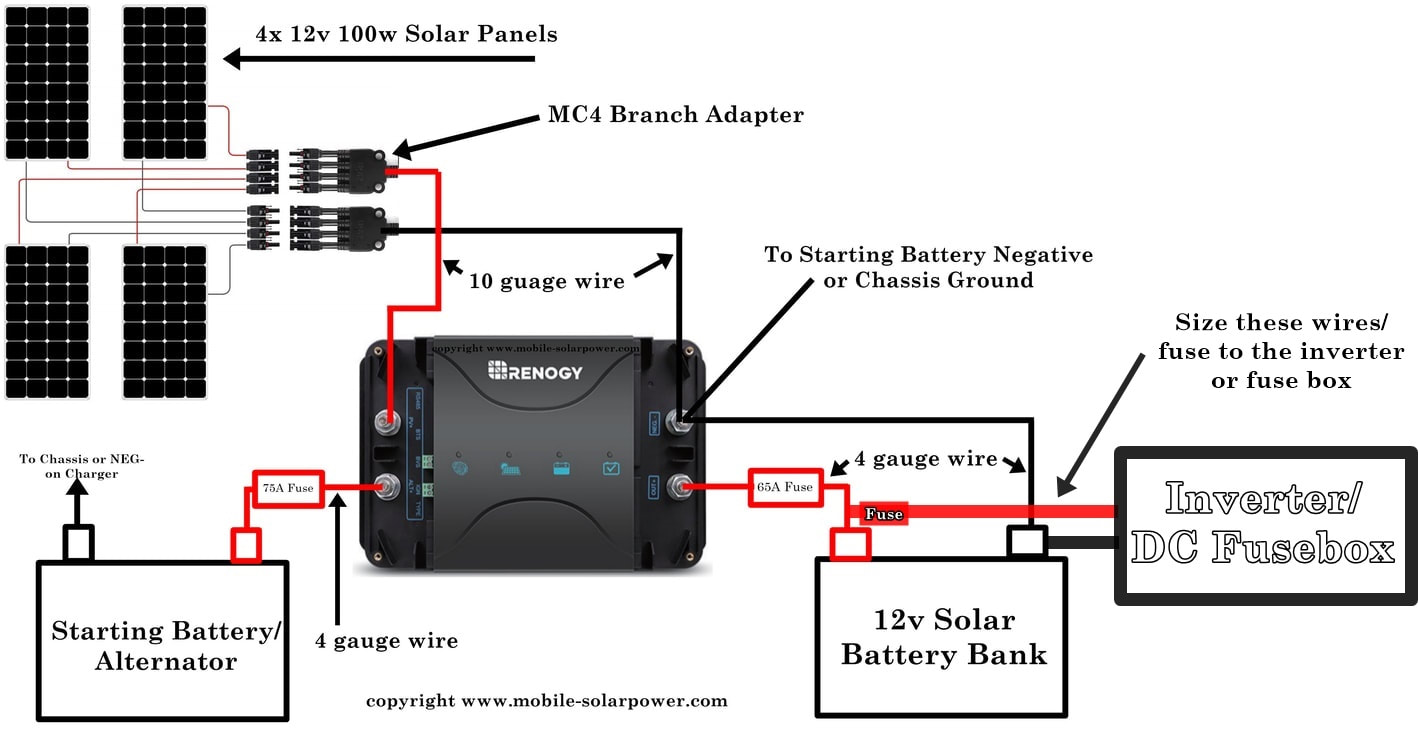Thanks for the info and feedback.
Tape was my attempt to understand the connections and lengths before dealing with cables.
I am using the Renogy DCDC50 model with 100AH LiFePO4, so thanks for pointing out the concern of overwhelm the stock alternator. I will look at higher output alternators if I run into issues. It was my understanding that the DCDC50 can pull a maximum of 25amps from the alternator whenever solar input is sensed (the unit can only pull 50% of its max rating from each source, so as long as solar input is >0.0A, the alternator should be limited to 25 amps). Is this wrong to assume? I plan to size wires/fuses/breakers/etc. for a full uninhibited alternator load but hoped it would not routinely overload the stock alternator if only pulling 25 rather than 50 amps.
I'm a little disappointed with the feedback on breakers but will listen to the recommendations. I was following the schematic and parts listed here including location of the breakers:
Building a vehicle mounted solar power system? Let me help.
www.mobile-solarpower.com
From the recommendations posted:
- Add a MRBF or Mega fuse to the solar/house battery near the positive terminal.
- Add a MRBF or Mega fuse to the starter battery input near where it leaves the alternator.
- Place fuses as close as practical to the positive source (i.e., alternator, starter battery, solar battery).
- Keep the LEFT breaker on my diagram to allow manual disconnection of alternator charging
- Keep the RIGHT breaker on my diagram to allow manual disconnection of all charging sources (solar and alternator) from reaching the solar battery
- No need to connect the D+ connection on the Renogy DCDC/Solar unit. Noted.
- DC loads will all go through a blue sea fuse block with appropriately sized fuses and wires.
A few thoughts...
- Distance between the controller and the alternator is 3-4ft.
- Distance between the solar battery and the DCDC50 is 2ft.
- Distance between the bus bar and the fuse block for DC appliances is about 10ft.
- I do not plan to use an inverter.
Based on recommendations from the link above on
mobile-solarpower.com I was going to use the following:
1) 4-gauge wire throughout the diagram except...
2) Each solar panel will get an inline MC4 fuse between the panel and branch connector, then will 10g wire will run to the DCDC50 unit.
Does this sound correct?
Anything I misunderstood from the recommendations above?
Any other recommendations?
Thanks again for all the help.
